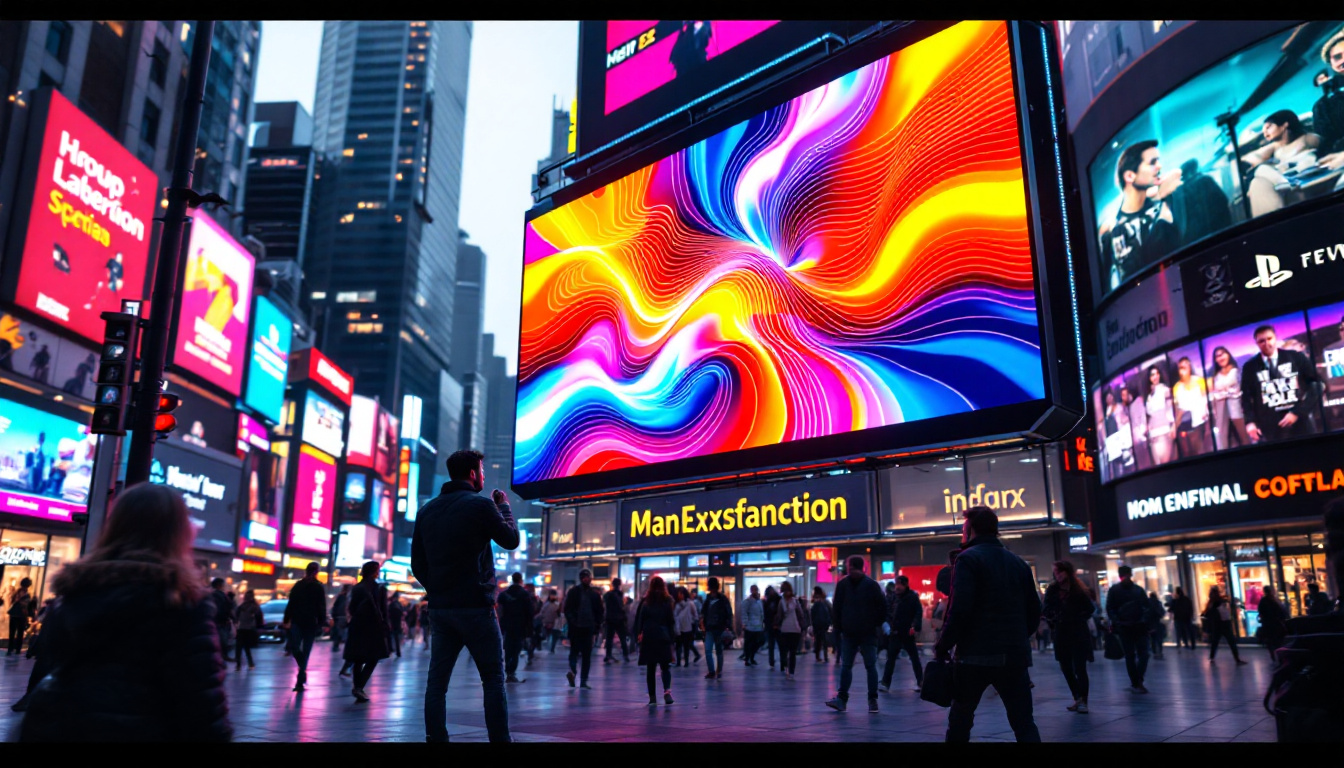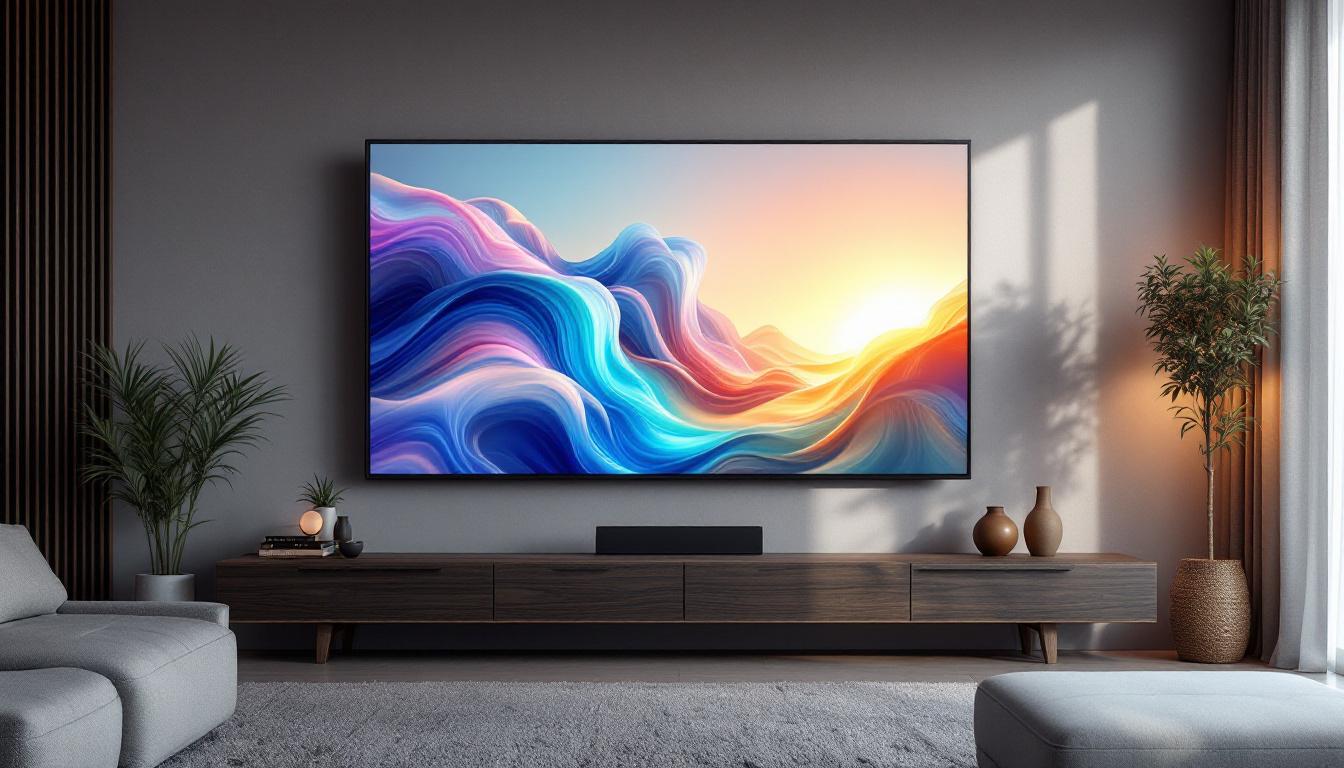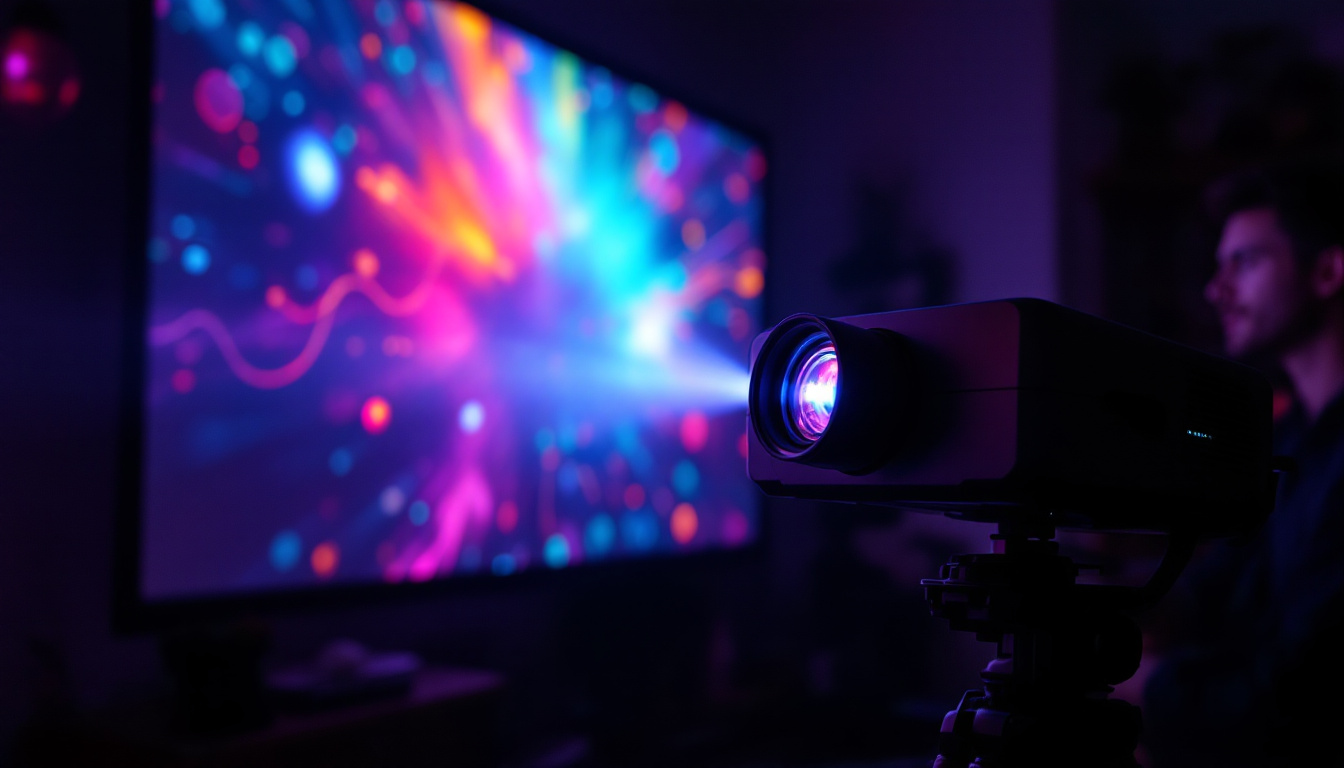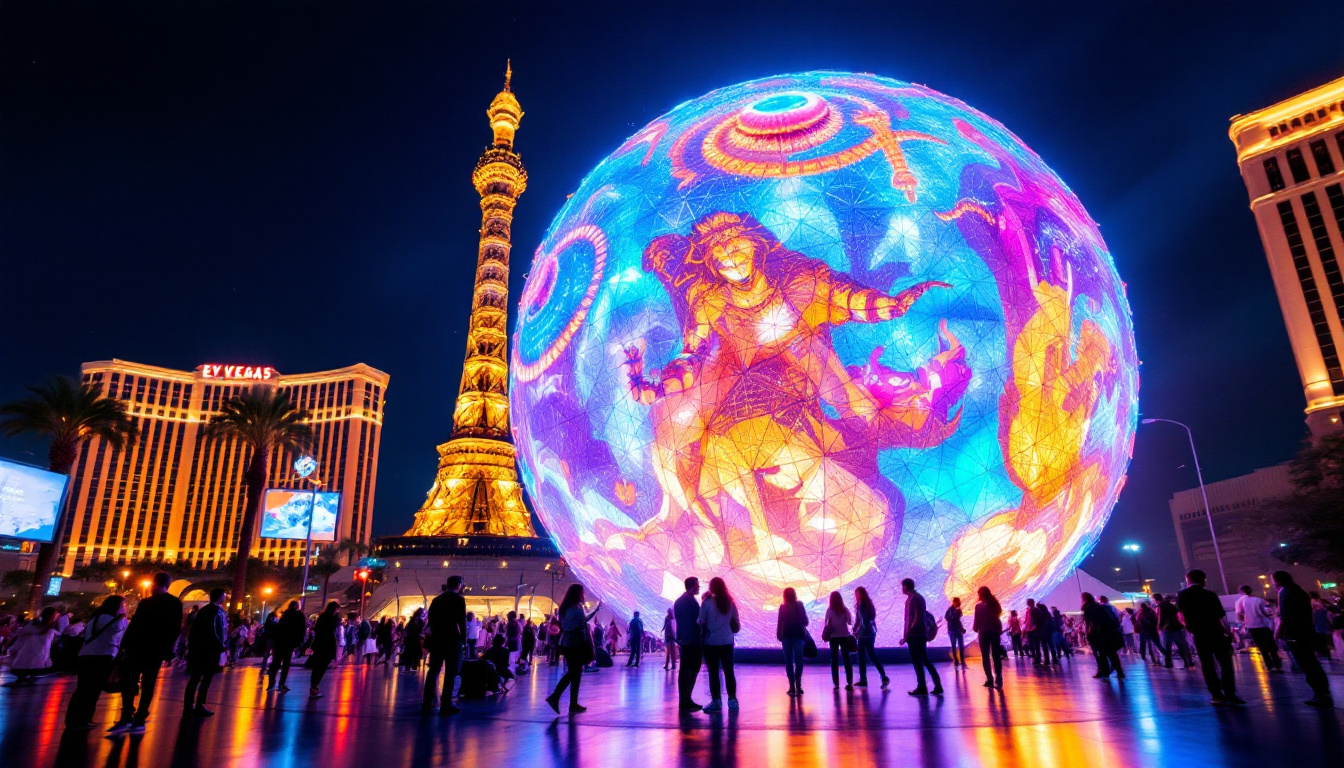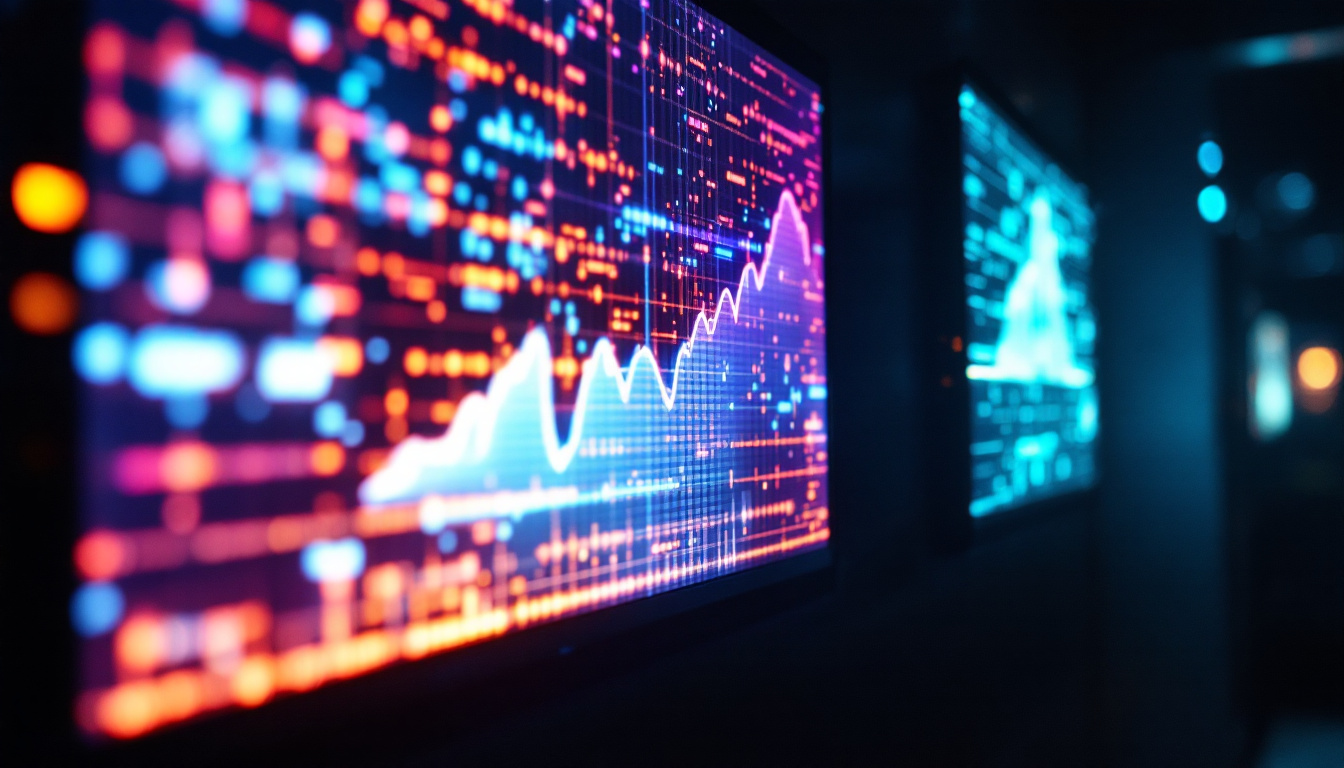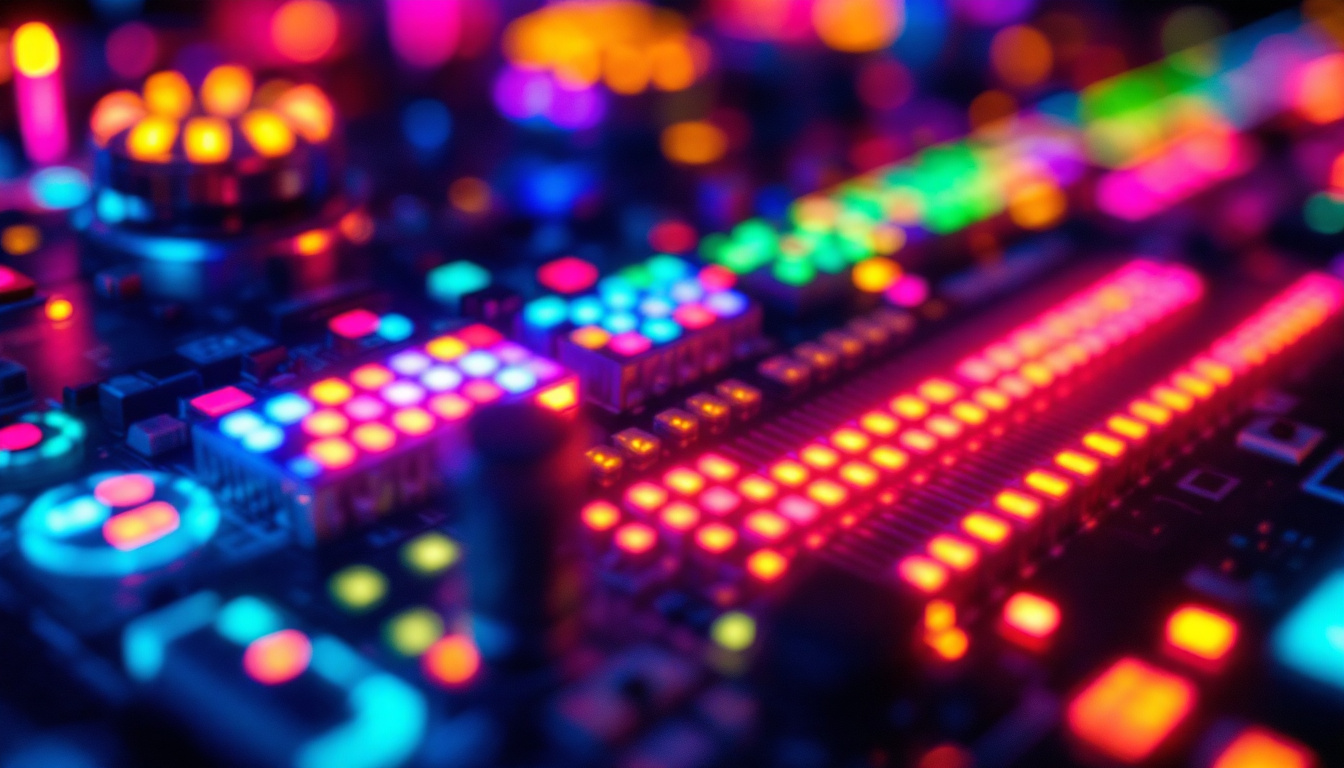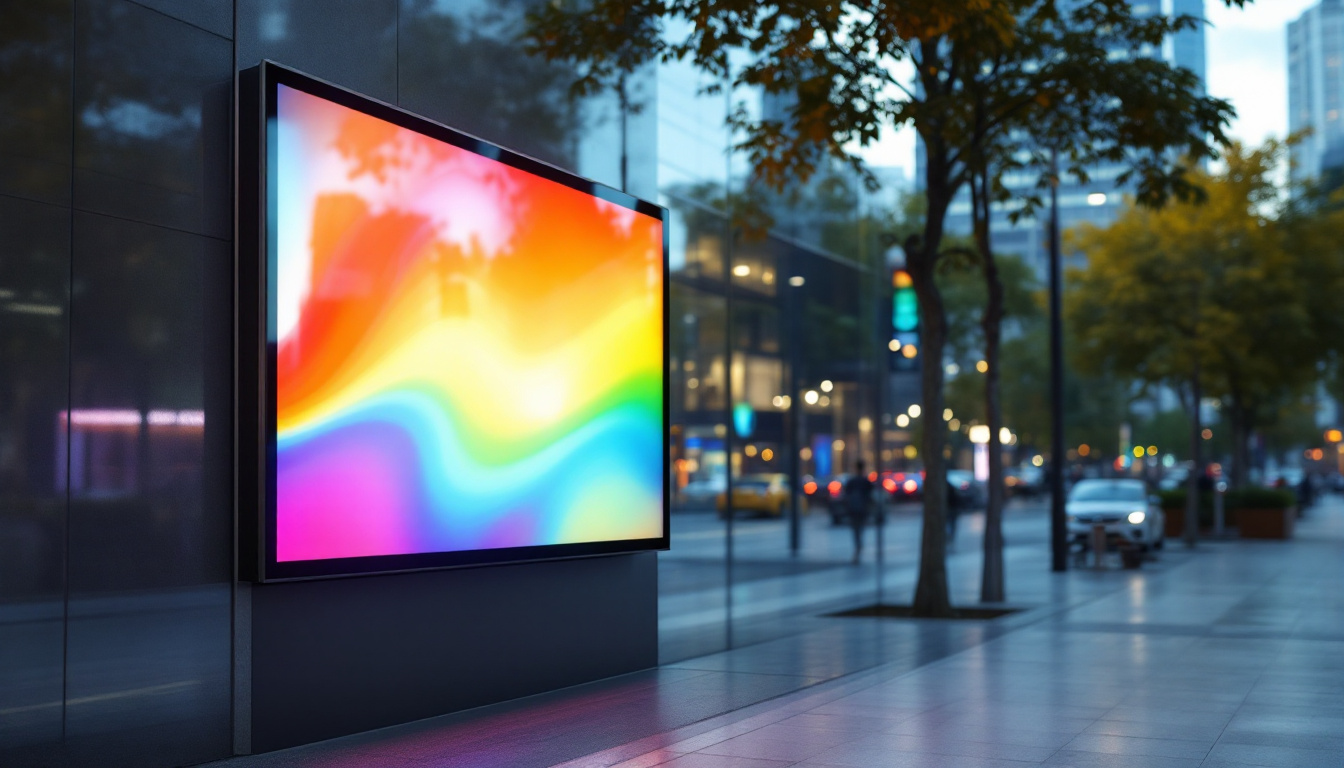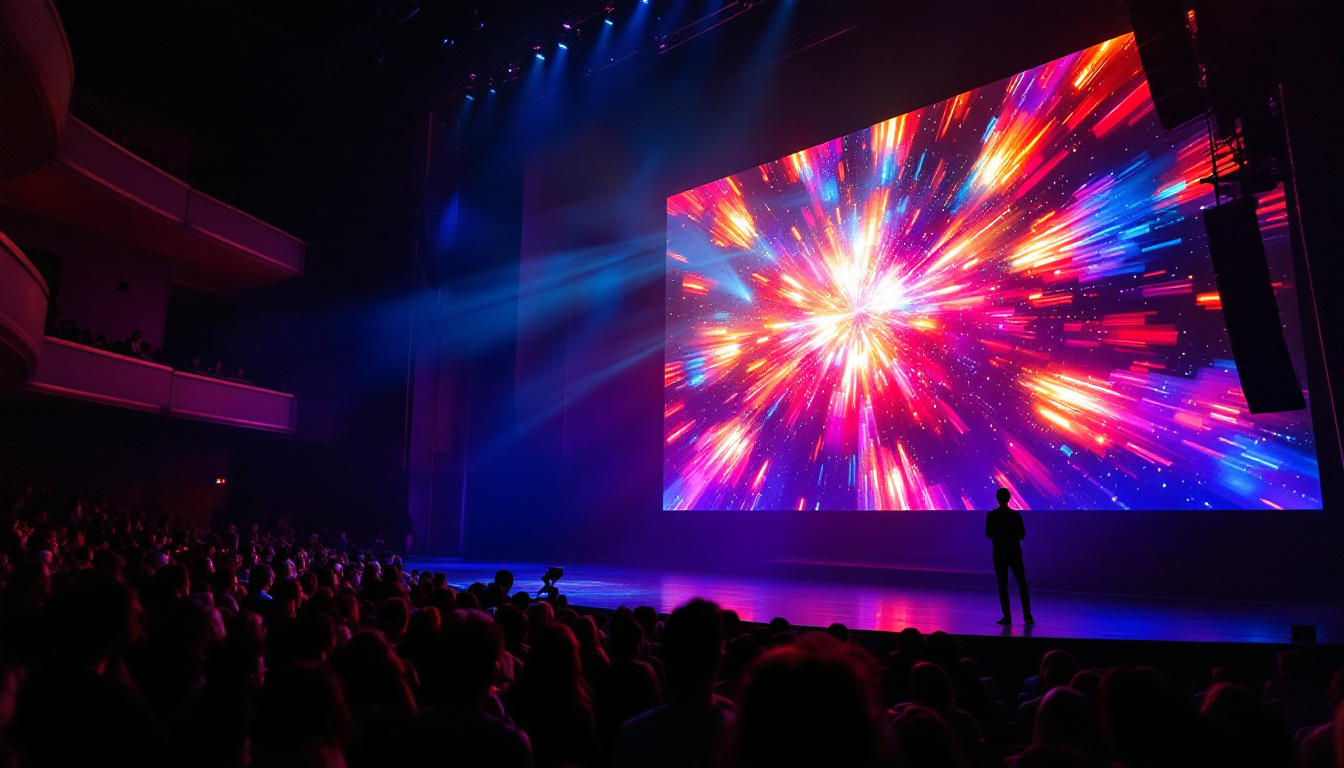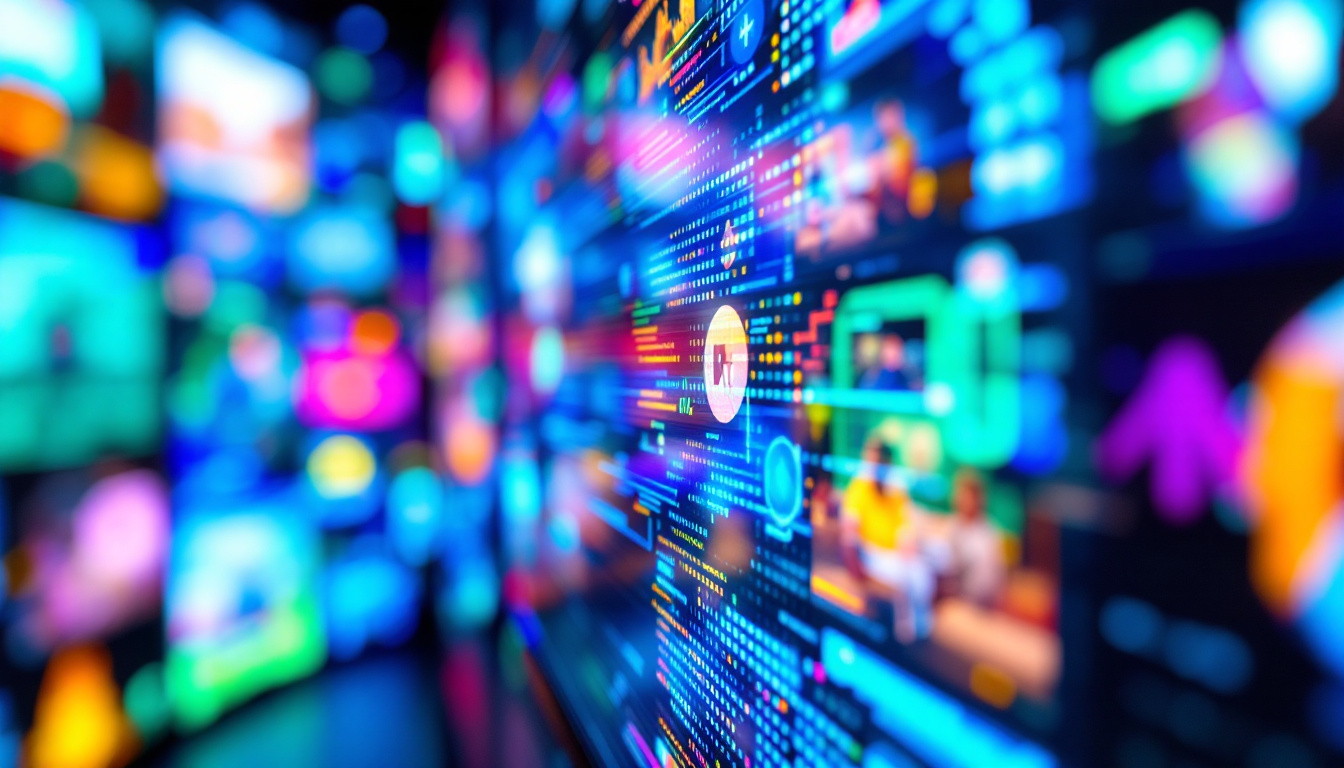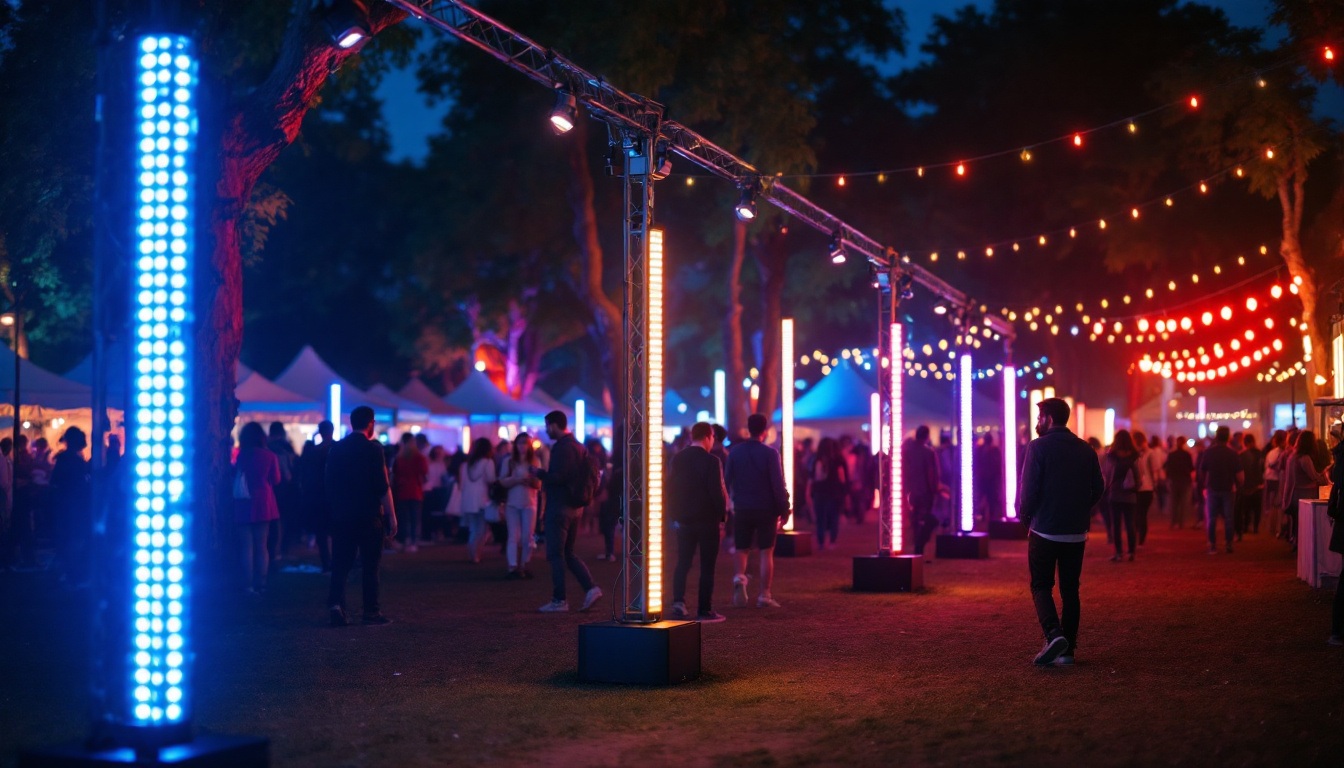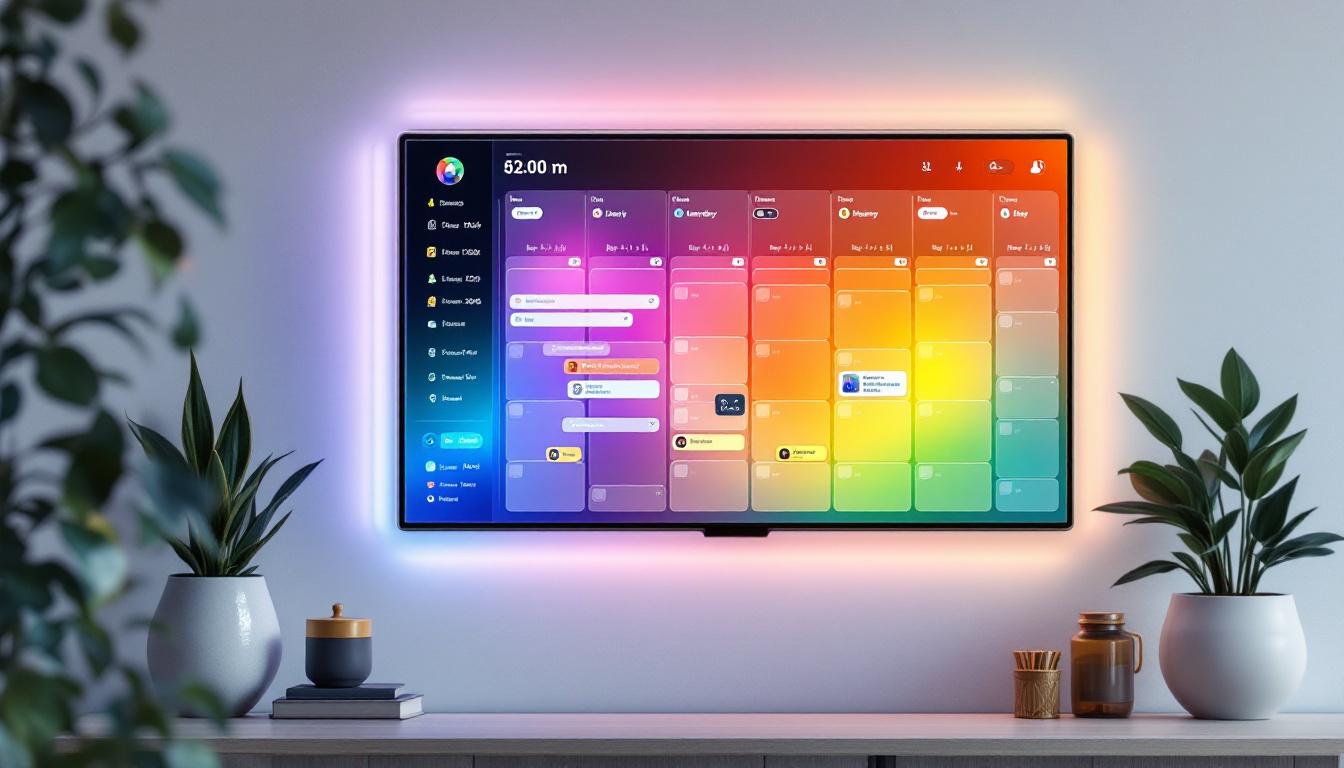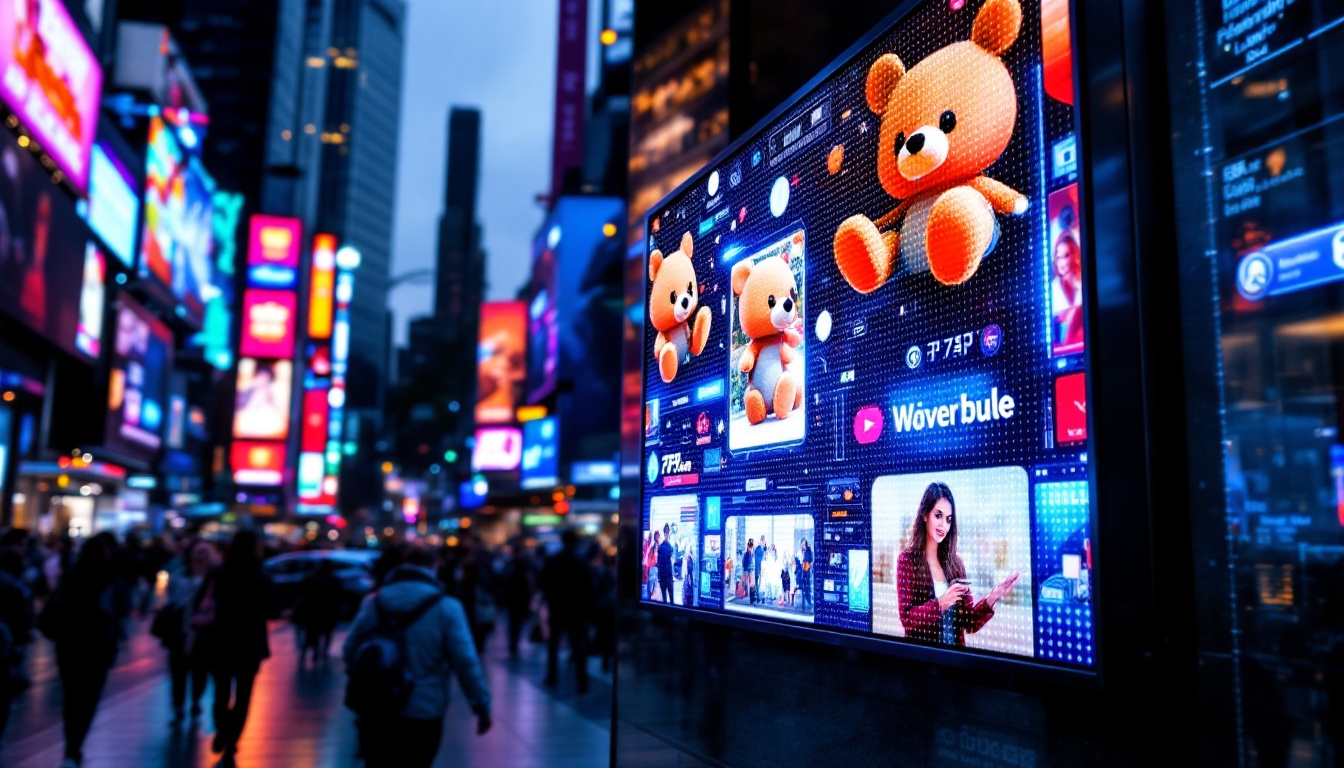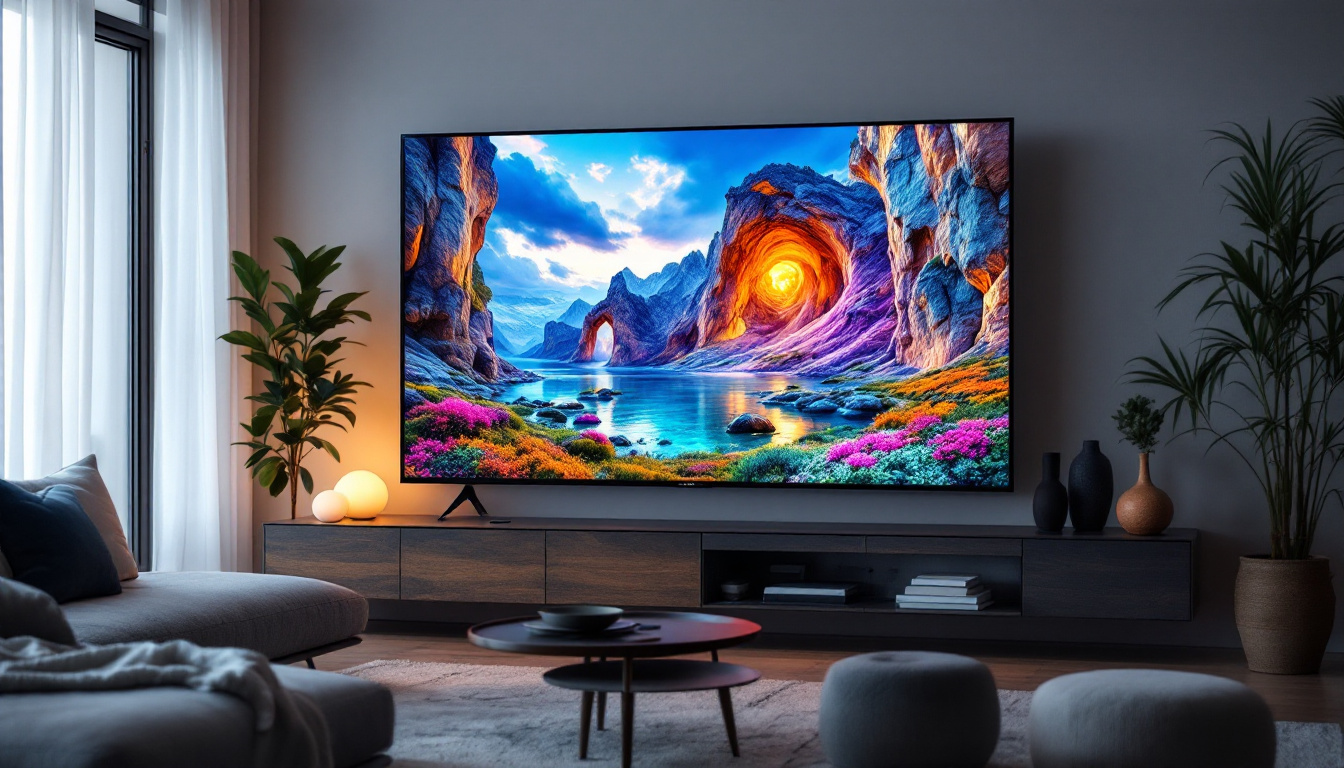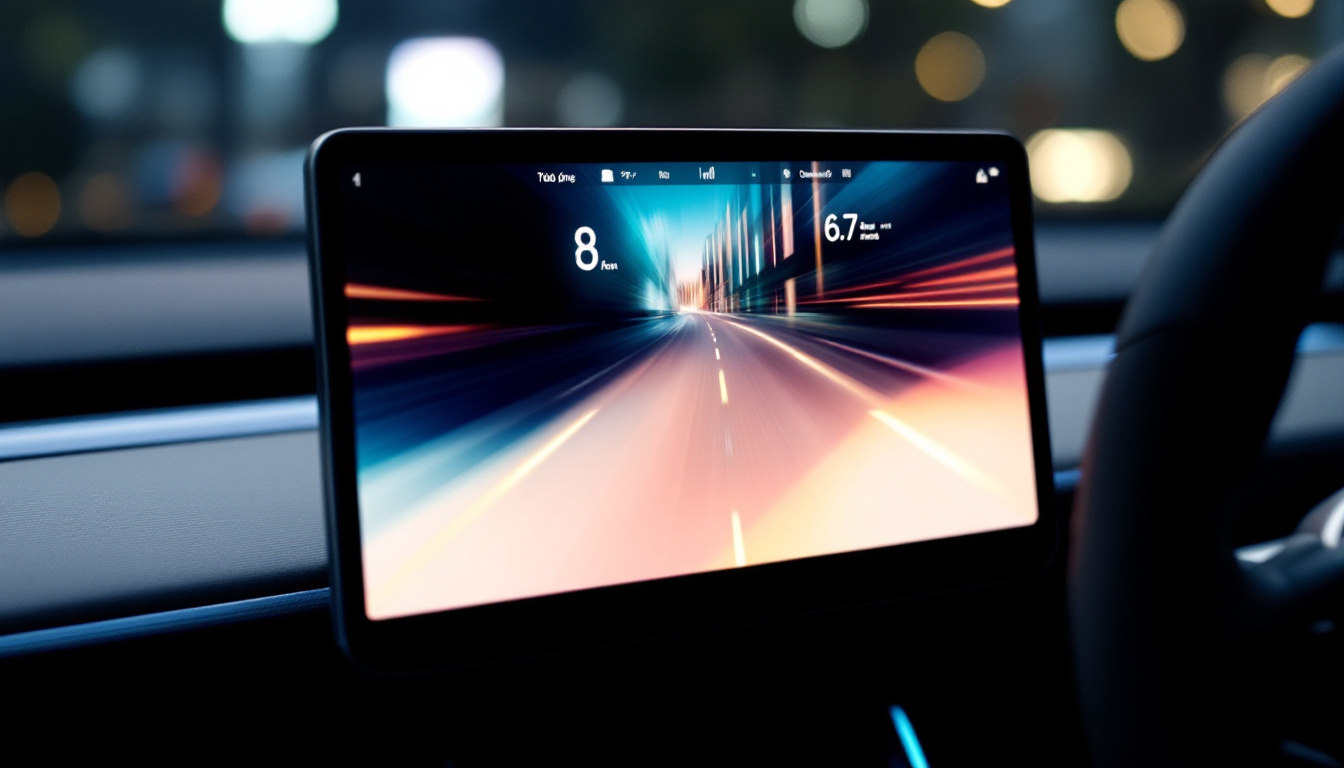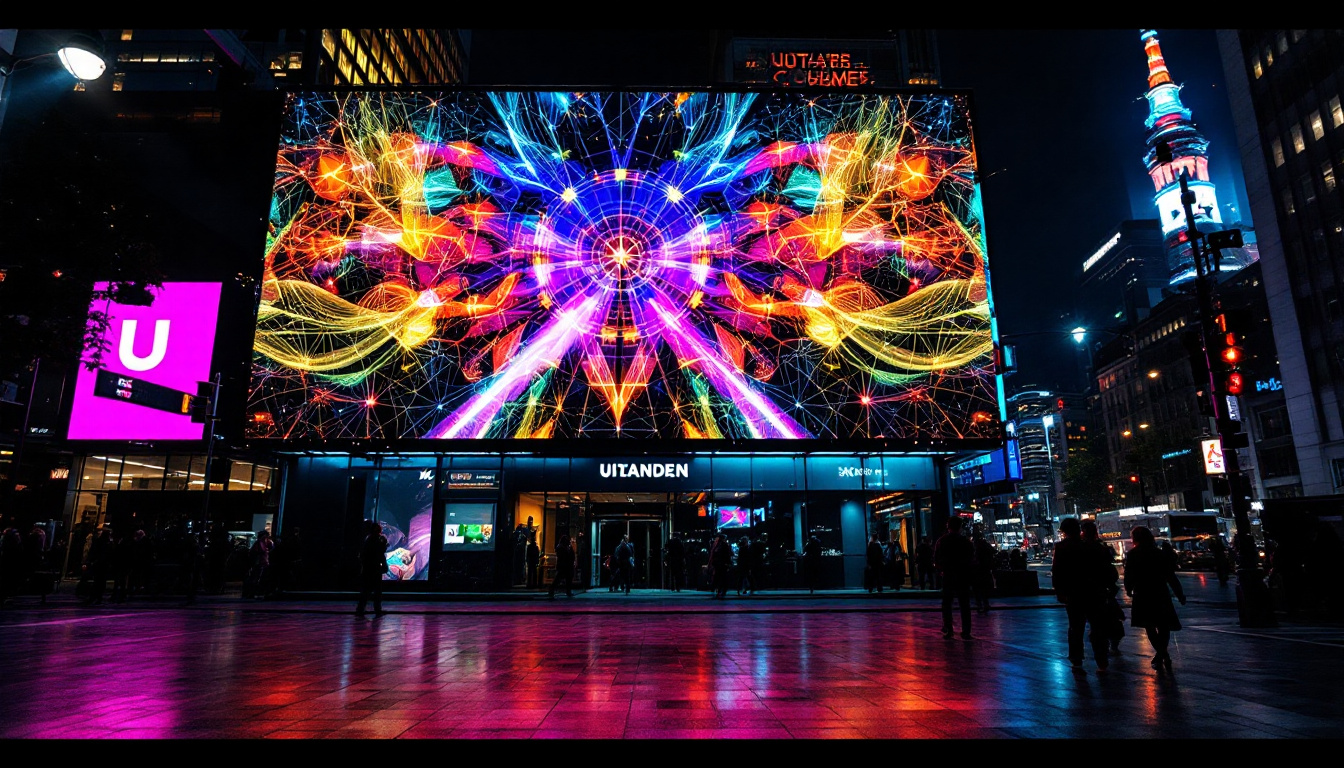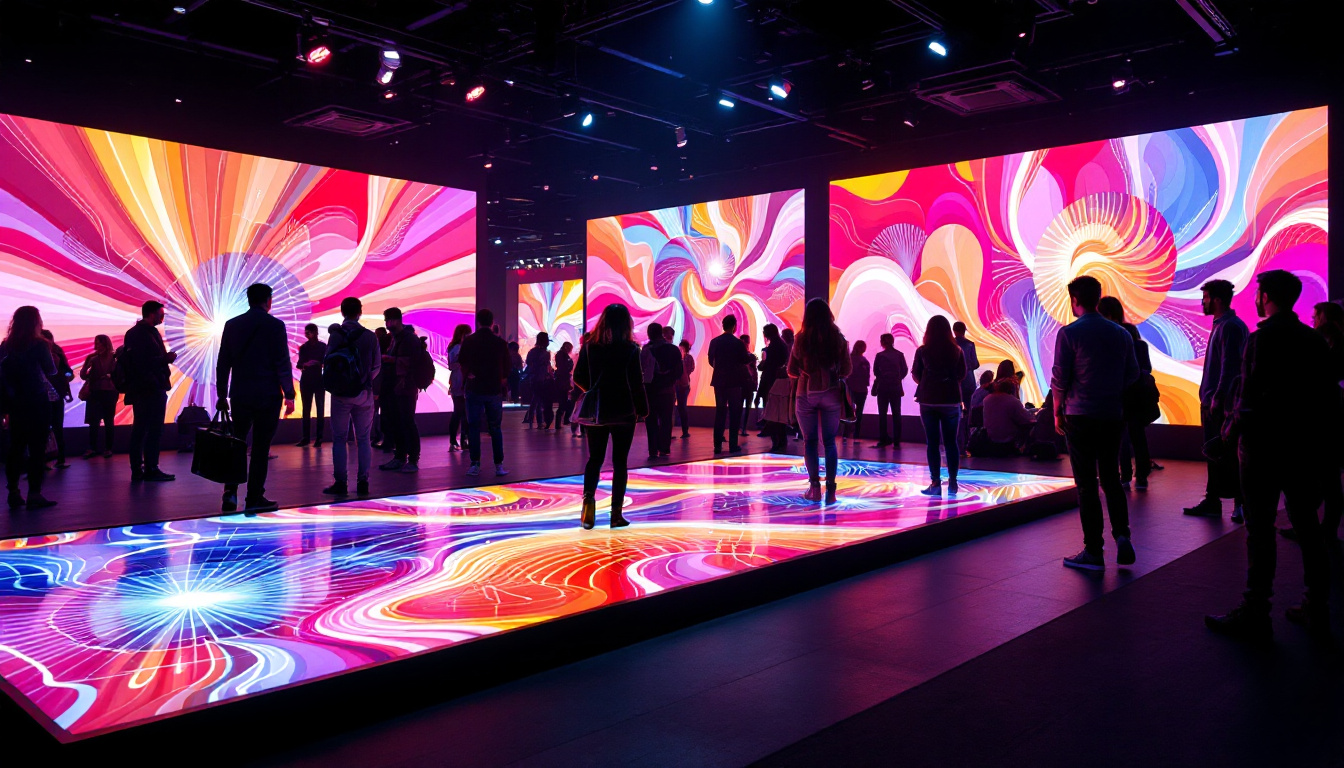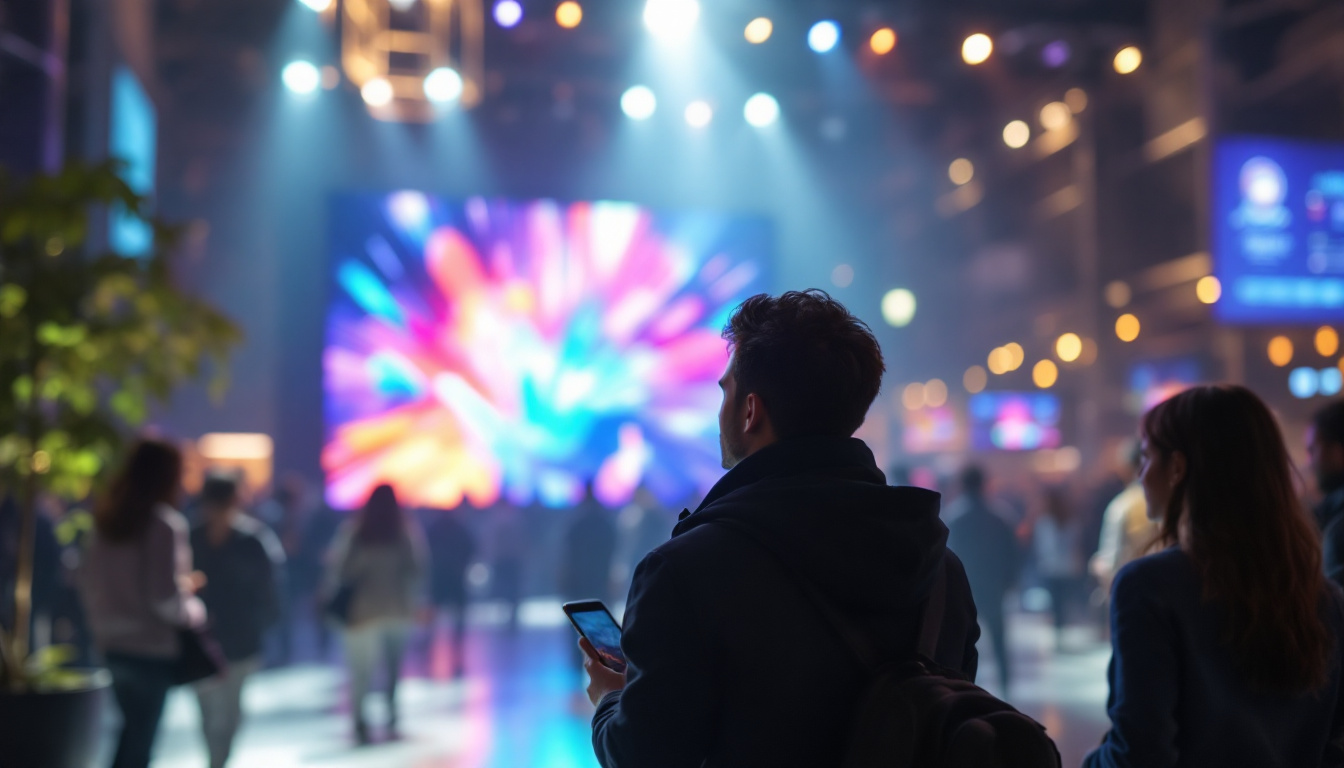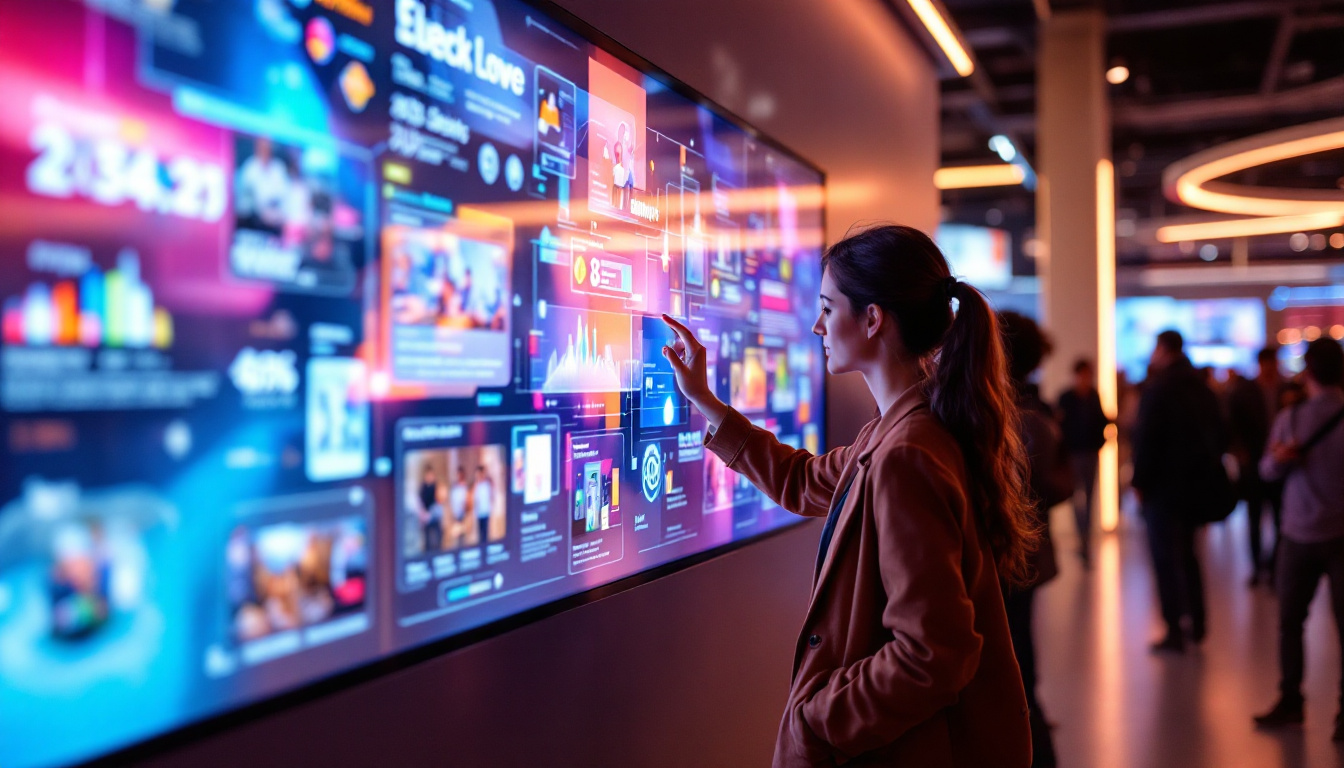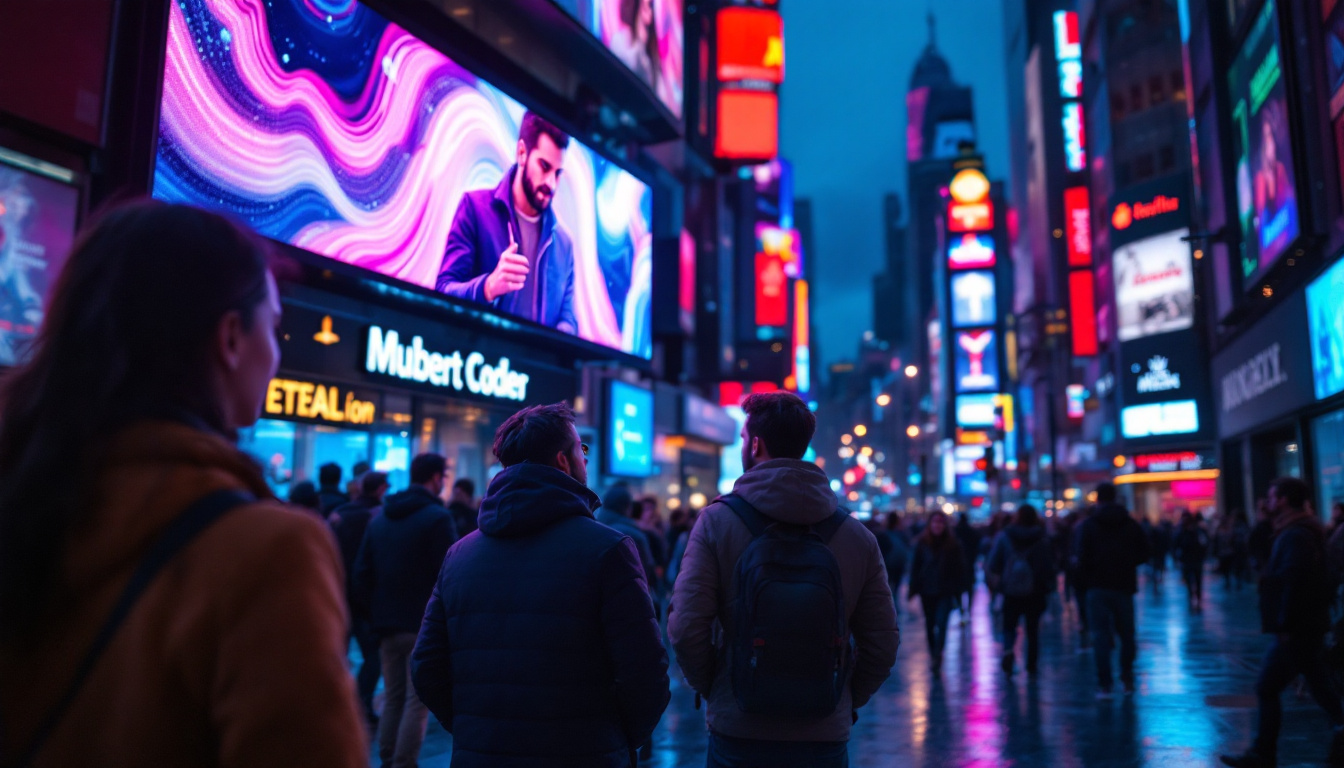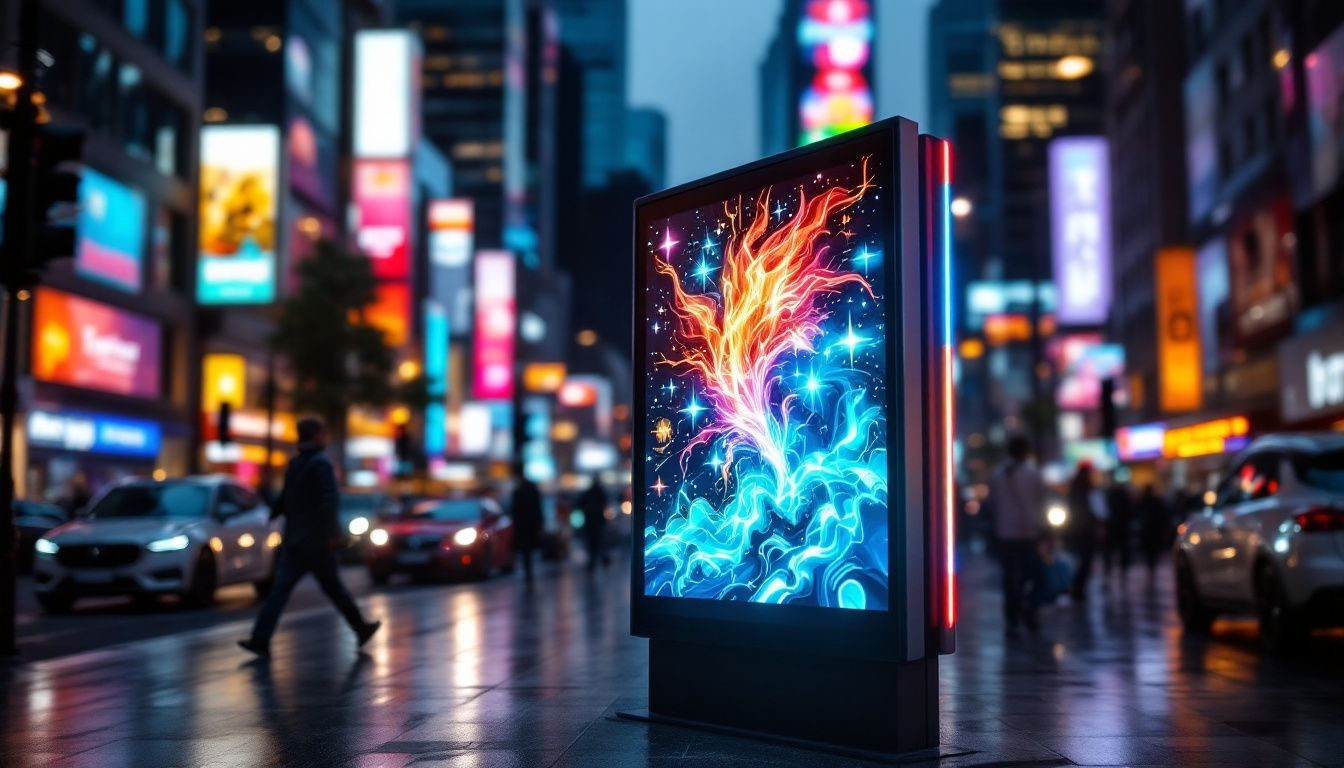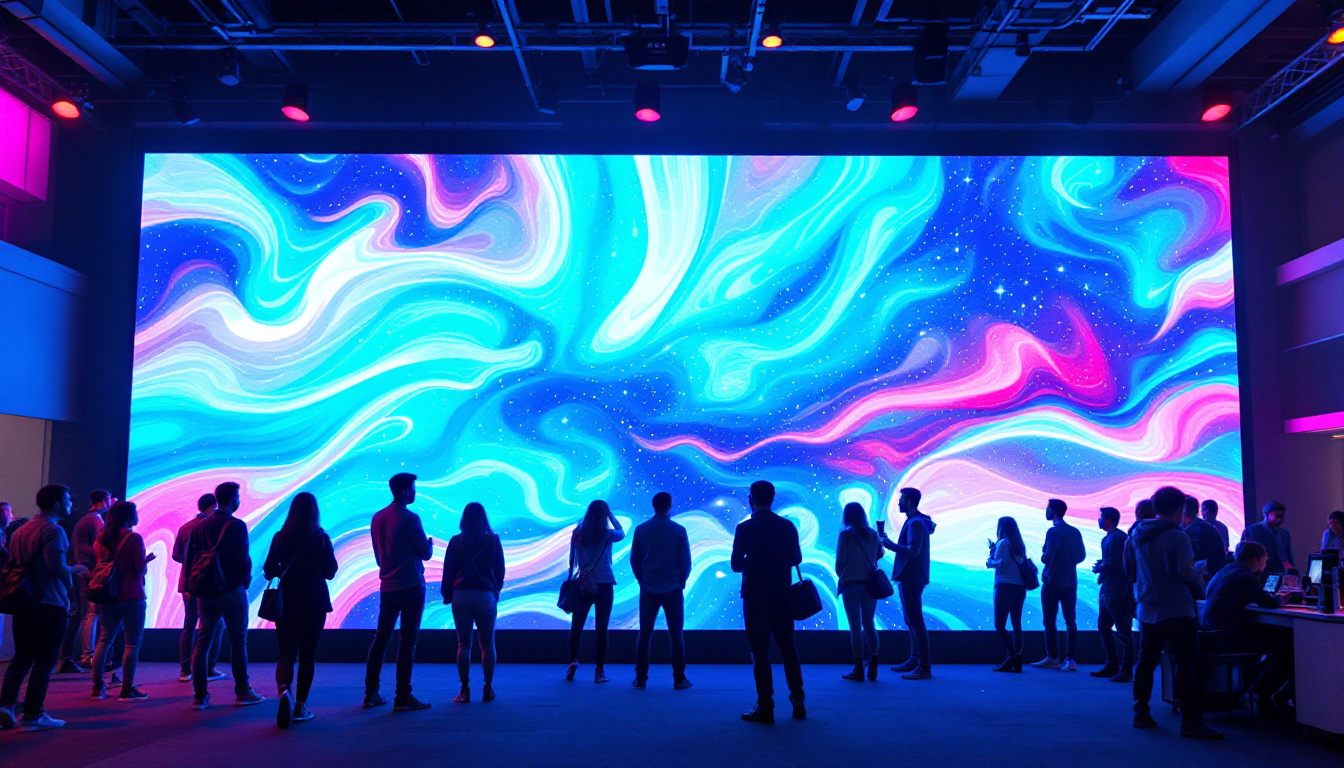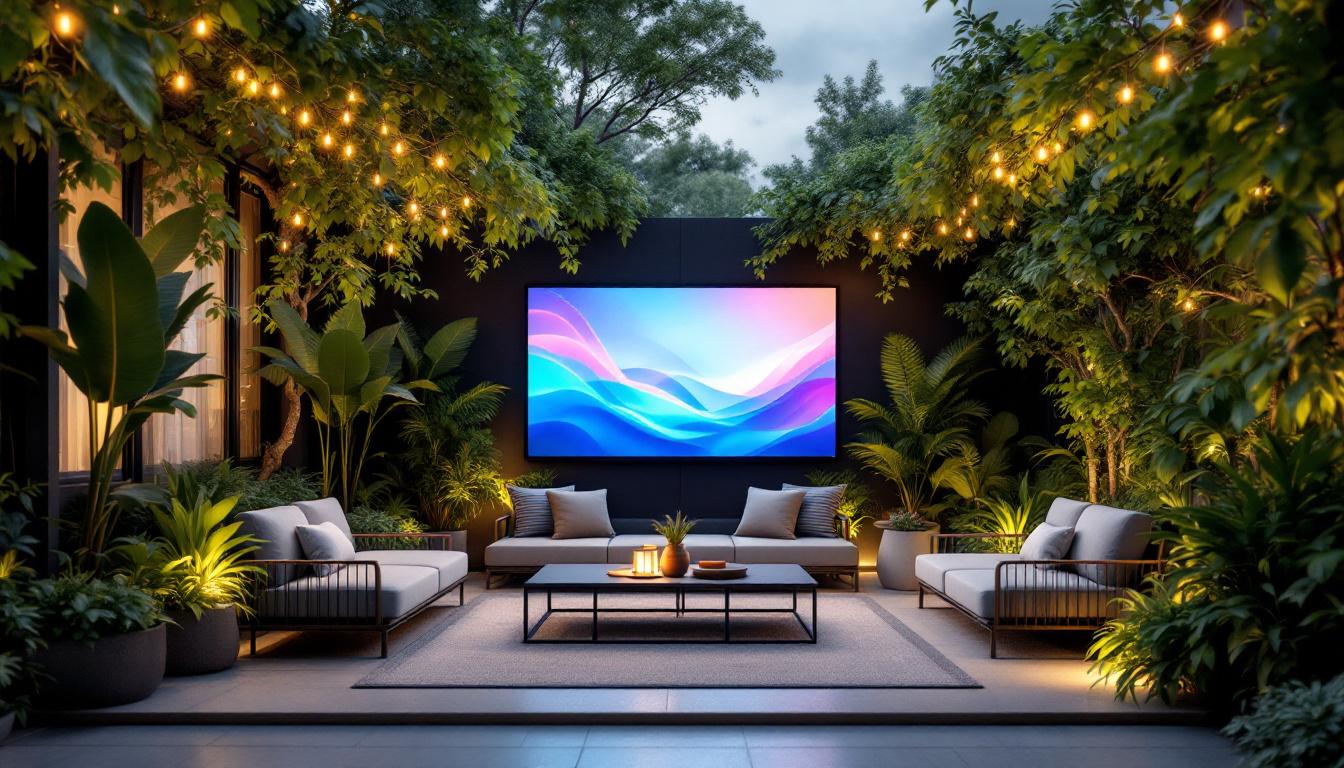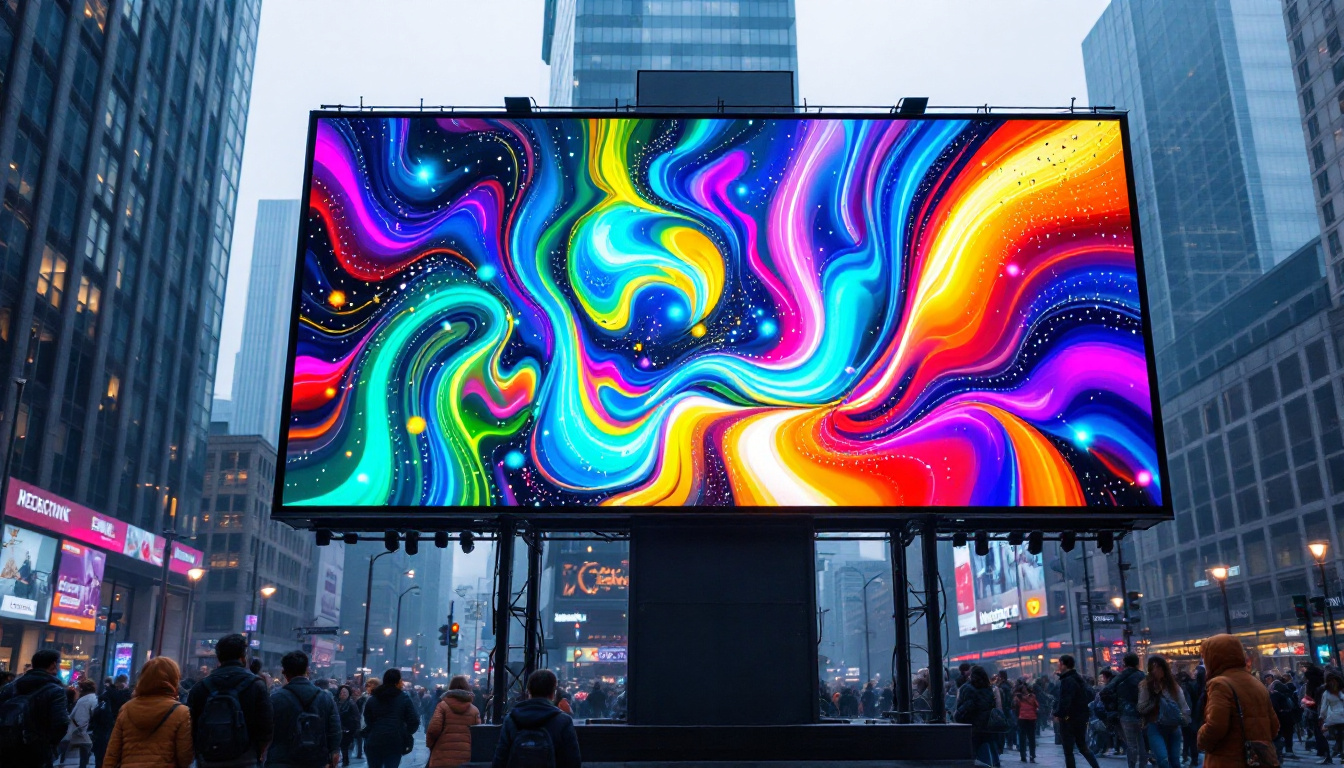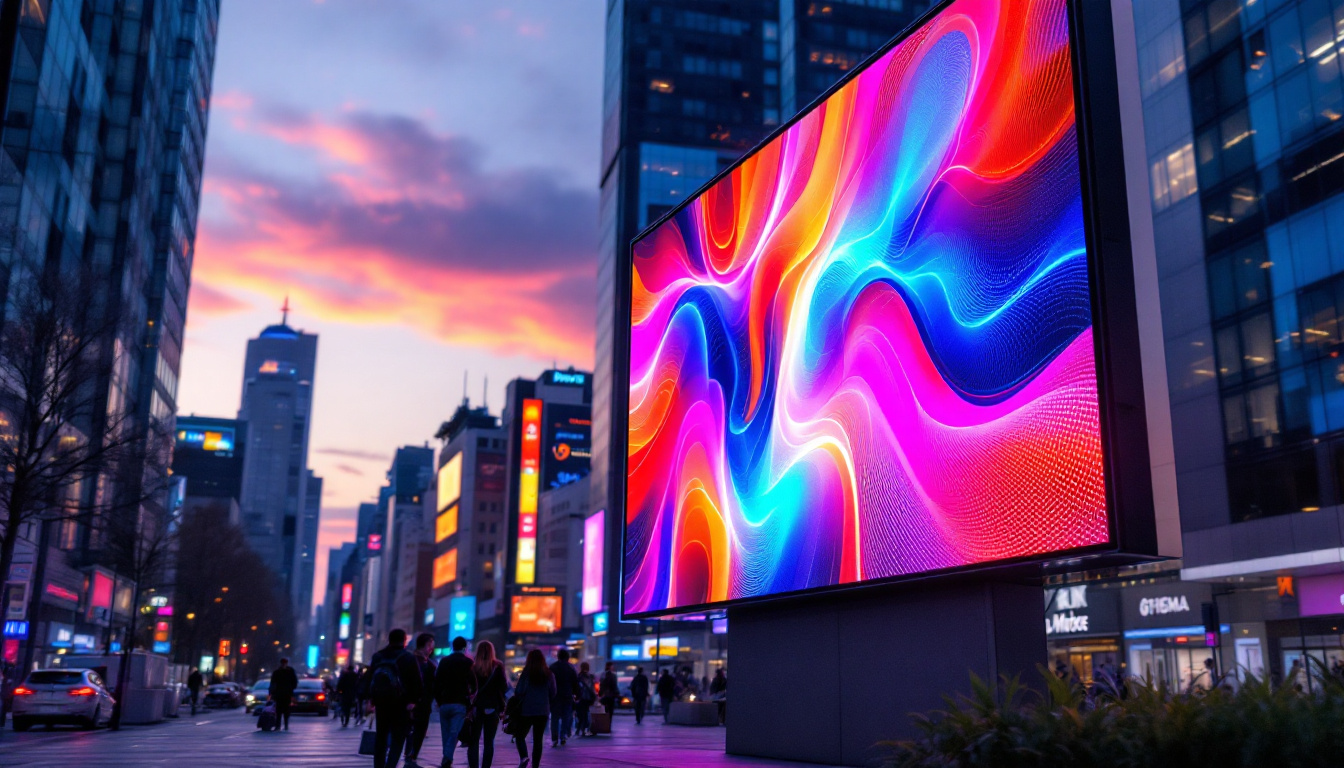In today’s fast-paced world, effective communication is crucial for businesses and organizations. Display signage has evolved significantly over the years, with LED displays becoming a popular choice for conveying messages and information. This article delves into the intricacies of LED display signage, exploring its benefits, technology, applications, and future trends.
Understanding LED Display Technology
LED, or Light Emitting Diode, technology has transformed the way information is presented. Unlike traditional signage methods, LED displays offer vibrant colors, high brightness, and the ability to display dynamic content. This section will explore how LED displays work and the various types available.
How LED Displays Work
At the core of an LED display is a matrix of tiny light-emitting diodes. These diodes produce light when an electric current passes through them. By combining red, green, and blue (RGB) diodes, a full spectrum of colors can be created. The arrangement and density of these diodes determine the display’s resolution and clarity.
LED displays can be categorized into two main types: direct view and rear-projection. Direct view displays are made up of individual LED modules that can be assembled into larger screens, while rear-projection displays use LED technology behind a screen to project images. Both types have their unique advantages, making them suitable for various applications. For instance, direct view displays are often favored for their brightness and clarity in well-lit environments, while rear-projection displays are typically used in venues where space is limited and a large image is needed without the bulk of a traditional screen.
Types of LED Displays
LED displays come in various formats, each tailored for specific uses. The most common types include:
- Indoor LED Displays: These displays are designed for use in controlled environments, such as shopping malls, conference rooms, and theaters. They typically have a higher pixel density, providing excellent image quality at close viewing distances. Indoor displays also often feature advanced technologies such as high refresh rates and better color accuracy, making them ideal for video presentations and live events.
- Outdoor LED Displays: Built to withstand harsh weather conditions, outdoor displays are brighter and more durable. They are commonly used for billboards, sports arenas, and public transportation stations. These displays are engineered with protective coatings and robust housings to ensure longevity, even in extreme temperatures and exposure to the elements. Additionally, outdoor LED displays often incorporate features like automatic brightness adjustment to maintain visibility in varying light conditions.
- Transparent LED Displays: These innovative displays allow for visibility through the screen while still showcasing content. They are often used in retail environments to enhance product displays without obstructing views. Transparent LED technology opens up new possibilities for advertising and branding, allowing businesses to create eye-catching installations that engage customers while maintaining an open and airy store layout.
Another emerging type of LED display is the flexible LED display, which can be bent or shaped to fit unconventional spaces. This adaptability makes them perfect for creative installations in art galleries, museums, or unique architectural designs. As technology advances, the potential applications for LED displays continue to expand, leading to more immersive and engaging experiences for viewers. The integration of smart technology into LED displays also allows for real-time content updates and interactive features, further enhancing their versatility in various settings.
Benefits of LED Display Signage
LED display signage offers numerous advantages over traditional signage methods. From enhanced visibility to cost-effectiveness, these displays are revolutionizing the way businesses communicate with their audiences.
Enhanced Visibility and Engagement
One of the most significant benefits of LED displays is their brightness and clarity. Even in direct sunlight, outdoor LED displays remain visible, ensuring that messages reach their intended audience. This visibility translates to higher engagement rates, as passersby are more likely to notice and interact with eye-catching content.
Moreover, the ability to display dynamic content—such as videos, animations, and real-time updates—further enhances engagement. This interactivity captures attention and encourages viewers to spend more time absorbing the information presented. Additionally, LED displays can be programmed to change messages at specific intervals, allowing businesses to showcase multiple promotions or announcements throughout the day. This feature not only maximizes the use of the display but also keeps the content fresh and relevant, appealing to a wider audience.
Cost-Effectiveness and Longevity
While the initial investment in LED display technology may be higher than traditional signage, the long-term savings are substantial. LED displays consume less energy compared to other lighting technologies, leading to lower electricity bills. Additionally, their lifespan can exceed 100,000 hours, significantly reducing maintenance and replacement costs.
Furthermore, the flexibility of LED displays allows businesses to change their content easily and frequently. This adaptability means that companies can respond quickly to market trends, promotions, or events without incurring additional printing costs. The ability to update content remotely through software also streamlines operations, enabling businesses to manage their signage from anywhere, which is particularly beneficial for multi-location enterprises. This remote management capability not only saves time but also ensures that all locations maintain consistent messaging, reinforcing brand identity across various platforms.
Applications of LED Displays
The versatility of LED displays makes them suitable for a wide range of applications across various industries. From advertising to information dissemination, their uses are virtually limitless.
Advertising and Marketing
In the advertising realm, LED displays have become a staple for brands looking to capture audience attention. Billboards, storefronts, and event venues utilize these displays to showcase promotions, product launches, and brand messages. The ability to rotate and update content in real-time allows marketers to tailor their messages to specific audiences or events, maximizing impact.
Events such as concerts, sports games, and festivals also benefit from LED displays. They provide essential information, such as schedules, directions, and live feeds, enhancing the overall experience for attendees. Additionally, the vibrant colors and high-resolution graphics of LED displays can create an immersive atmosphere, drawing in crowds and keeping them engaged. This dynamic visual appeal is particularly effective in creating memorable brand experiences, as it allows companies to convey their messages in a visually striking manner that resonates with consumers.
Transportation and Wayfinding
LED displays play a crucial role in transportation systems, providing real-time information to commuters. Airports, train stations, and bus terminals use LED signage to display flight schedules, delays, and gate information. This instant communication helps reduce confusion and enhances the traveler experience. The clarity and brightness of LED displays ensure that information is easily visible, even in bright sunlight or dimly lit environments, making them indispensable in busy transit hubs.
Moreover, wayfinding systems in large venues, such as shopping malls and hospitals, utilize LED displays to guide visitors. These displays can be programmed to show maps, directions, and important announcements, ensuring that individuals can navigate complex environments with ease. In hospitals, for instance, LED wayfinding displays can be particularly beneficial, as they not only direct patients to various departments but can also provide real-time updates about wait times or changes in services. This functionality not only enhances the visitor experience but also streamlines operations within these facilities, ultimately contributing to a more efficient service delivery.
Future Trends in LED Display Signage
The LED display industry is continuously evolving, driven by technological advancements and changing consumer preferences. As we look to the future, several trends are likely to shape the landscape of display signage.
Integration with Smart Technology
As smart technology becomes more integrated into everyday life, LED displays are following suit. The rise of the Internet of Things (IoT) allows for smarter signage that can adapt to real-time data. For instance, displays can change content based on weather conditions, audience demographics, or even social media trends.
This integration not only enhances the relevance of displayed content but also allows for more personalized experiences. Businesses can leverage data analytics to tailor messages to specific audiences, increasing engagement and effectiveness. Furthermore, the ability to remotely manage and update content on LED displays through cloud-based platforms means that companies can respond swiftly to market changes or emergencies, ensuring that their messaging remains timely and impactful.
Sustainability and Eco-Friendly Solutions
With growing concerns about environmental impact, the demand for sustainable signage solutions is on the rise. LED technology is inherently more energy-efficient than traditional lighting, but the industry is also exploring eco-friendly materials and production processes.
Recyclable components, energy-efficient manufacturing practices, and the use of renewable energy sources are becoming increasingly important. As businesses strive to align with sustainability goals, eco-friendly LED displays will likely gain traction in the market. Additionally, innovations such as solar-powered LED signage are emerging, allowing for off-grid installations that reduce reliance on conventional power sources. This not only minimizes the carbon footprint but also opens up new possibilities for signage in remote or underserved areas, further expanding the reach and versatility of LED technology.
Conclusion
LED display signage has revolutionized the way businesses communicate with their audiences. With their vibrant colors, dynamic content capabilities, and energy efficiency, LED displays offer a modern solution for effective communication. As technology continues to advance, the applications and benefits of LED displays will only expand, making them an indispensable tool for businesses in various sectors.
As organizations embrace this technology, it is essential to stay informed about the latest trends and innovations in the LED display market. By doing so, businesses can harness the full potential of LED signage to enhance their communication strategies and drive engagement.
In a world where capturing attention is more challenging than ever, LED displays stand out as a powerful medium for conveying messages, promoting brands, and enhancing experiences. The future of display signage is bright, and LED technology is at the forefront of this evolution.
Explore Cutting-Edge LED Display Solutions with LumenMatrix
Ready to elevate your visual communication strategy? Discover the innovative world of LED display technology with LumenMatrix. As a leader in the industry, we offer a diverse range of LED display modules designed to captivate your audience and amplify your brand’s presence. From Indoor and Outdoor LED Wall Displays to specialized solutions like Vehicle LED Displays, LED Sports Displays, and Custom LED Displays, our mission is to revolutionize your messaging with unparalleled clarity and impact. Don’t miss out on the opportunity to transform your space with our advanced LED solutions. Check out LumenMatrix LED Display Solutions today and step into the future of dynamic and engaging visual experiences.

